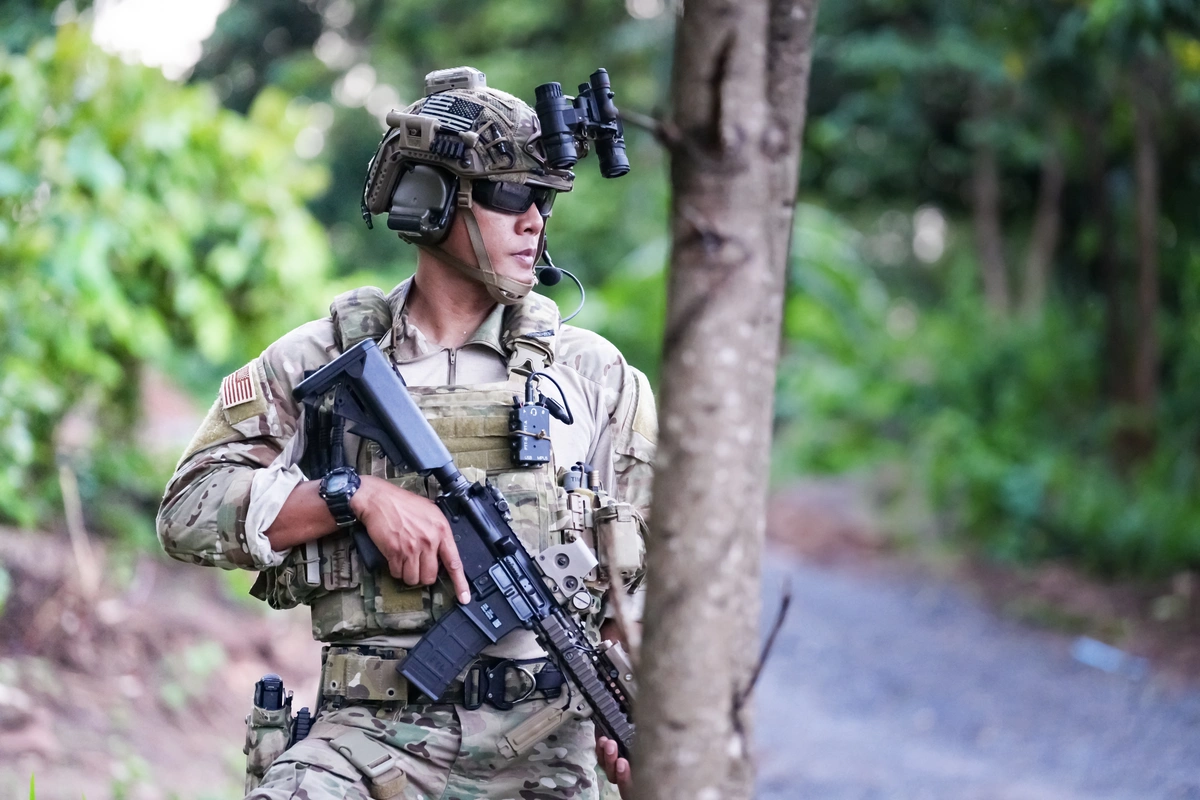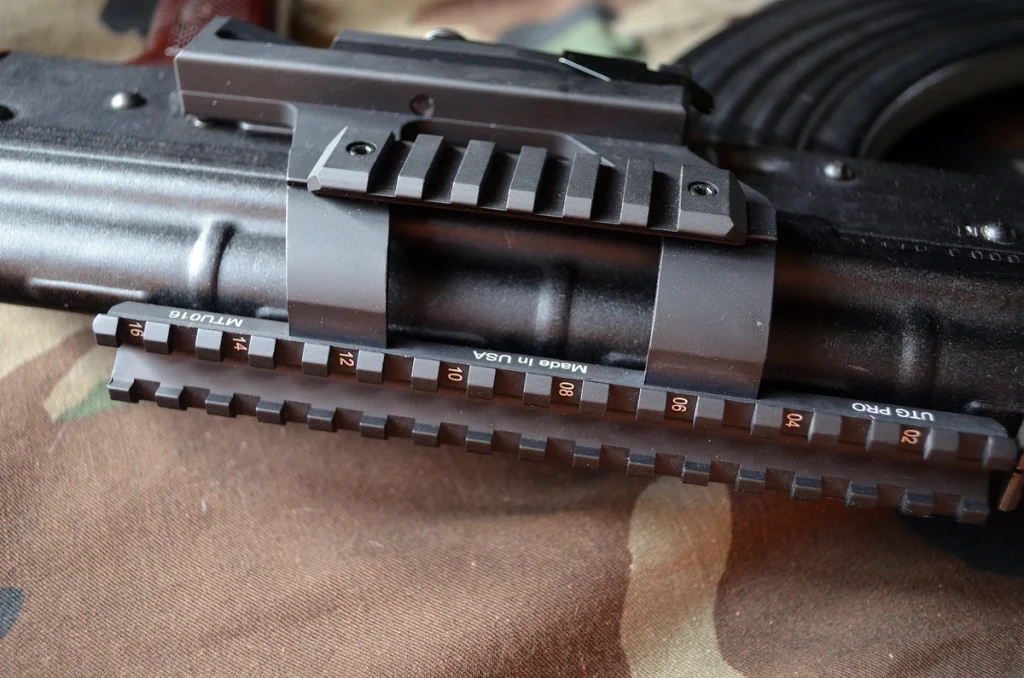In the world of modern military and tactical operations, the Picatinny rail sets the standard for personalization and adaptation of equipment. Since its introduction, the rail has revolutionized the way soldiers and tactical operators equip their weapons and equipment, offering unparalleled flexibility and compatibility. In this article, we will look at the history, use and future of the Picatinny rail, shedding light on its importance in modern military operations.
A revolution in the personalization of military equipment
The revolution in the field of personalization of military equipment initiated by the Picatinny rail cannot be overestimated. This simple but brilliant invention, established in the US as the MIL-STD-1913 standard and in NATO as STANAG 2324, has revolutionized the way soldiers and special operators approach the configuration of their equipment. Before the introduction of the Picatinny rail, customizing a weapon to suit individual preferences and mission requirements was often a complicated and limited process. This rail changed this dramatically, enabling quick and easy installation, disassembly, and replacement of a wide range of accessories – from optical and night vision sights, through flashlights, to various targeting systems. This versatility not only increases the effectiveness of soldiers on the battlefield, but also allows for quick adaptation to changing conditions and mission scenarios. The Picatinny rail has become a symbol of modern military technology, where flexibility, reaction speed and the ability to personalize equipment are crucial to the success of operations.
From design to military standard
The Picatinny rail was born in the early 1990s at the Picatinny Arsenal Plant in the USA. Designed to unify and facilitate the installation of firearm accessories, it quickly revolutionized the approach to personalizing military equipment. Before its introduction, soldiers struggled with the limitations and incompatibility of existing mounting systems, which often complicated the process of adapting equipment to individual needs and missions.
The introduction of the Picatinny rail was a breakthrough, offering a universal solution. This allowed for easy and safe attachment of a variety of accessories, from sights to lighting systems. It has become not only a standard in modern weapons, but also a symbol of engineering innovation and adaptability in the field of military technologies. This evolution from an in-house design to a global military standard highlights the importance of the Picatinny rail in shaping modern military tactics and strategy.

What makes a Picatinny rail different?
The rail is characterized by its unique, modular design, which allows for easy and secure attachment of various accessories. Its characteristic parallel grooves allow you to quickly add or remove elements such as sights, flashlights or holders. This versatility makes the Picatinny rail extremely popular in both military and civilian applications.
The key feature of the rail is its standardization and precision, which ensures compatibility and repeatability of mounting accessories on various weapon platforms. Resistance to extreme conditions and the durability of the material from which it is made guarantee its reliability in the most difficult situations. Thanks to these properties, the Picatinny rail has become the foundation of modern tactical equipment, enabling effective and quick adaptation of the equipment to dynamically changing conditions on the battlefield.
How a Picatinny rail in a modern weapon changes the face of war?
The rail, by introducing modularity in firearms, significantly influenced modern warfare techniques. By enabling the weapon to be easily adapted to various combat scenarios by installing sights, lighting systems and other accessories, it increased the effectiveness and versatility of soldiers on the battlefield. This flexibility in equipment configuration contributes to rapid response to changing conditions and tactical needs, which is crucial in the dynamic environment of modern warfare. The Picatinny rail, by enabling the integration of advanced technologies, has become an integral element of the modern military arsenal, radically changing the approach to personalization and use of weapons.

Let’s put the guns aside…
This rail, although commonly associated with firearms, is also used in other areas. An increasingly popular use of the rail is its installation in equipment such as military and tactical helmets. Thanks to it, soldiers can easily attach accessories such as lamps, cameras, or night vision goggles. This versatility significantly expands the functionality of helmets, transforming them into multi-functional tools supporting a variety of operations.
Another interesting application of the Picatinny rail is its use in civilian equipment such as drones and off-road vehicles. In the case of drones, the rail allows the installation of additional cameras or sensors, which increases their usefulness in filming, conducting geological research or monitoring. On off-road vehicles, a Picatinny rail can be used to attach additional lighting or other useful tools. All these possibilities emphasize the versatility and universality of the Picatinny rail, which goes beyond traditional military-tactical applications.
Innovations and potential future applications of the Picatinny rail
In the future, the rail has the potential to continue to evolve and adapt, especially in terms of integration with emerging technologies. We can expect innovations that will use the rail to mount advanced sensors and communication devices, which will significantly expand the tactical and operational capabilities of users. Moreover, the development of new power systems, such as compact batteries or solar panels adapted for rail mounting, can significantly increase the energy independence of weapons-mounted devices.
Technological advancement may also open the door to wider use of the Picatinny rail outside of the military. In shooting sports, hunting and even recreational use of weapons, the Picatinny rail can become even more versatile, allowing personalization and adaptation of equipment to the individual needs of users.
These future directions of development indicate that the Picatinny rail will remain an important and dynamically evolving tool in both military and civilian applications. Its universality and ability to adapt to new challenges and technologies make this rail have a promising future.



